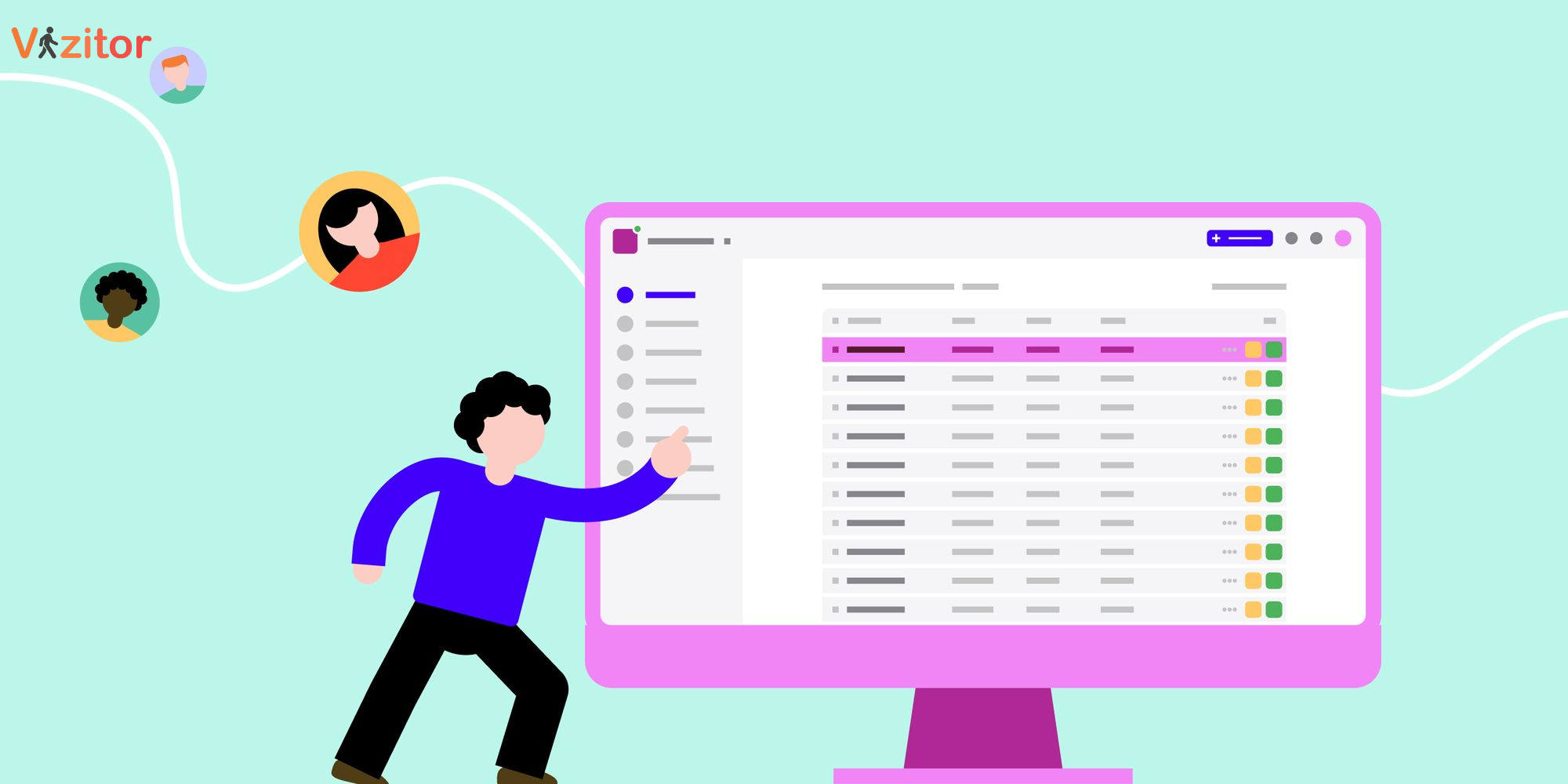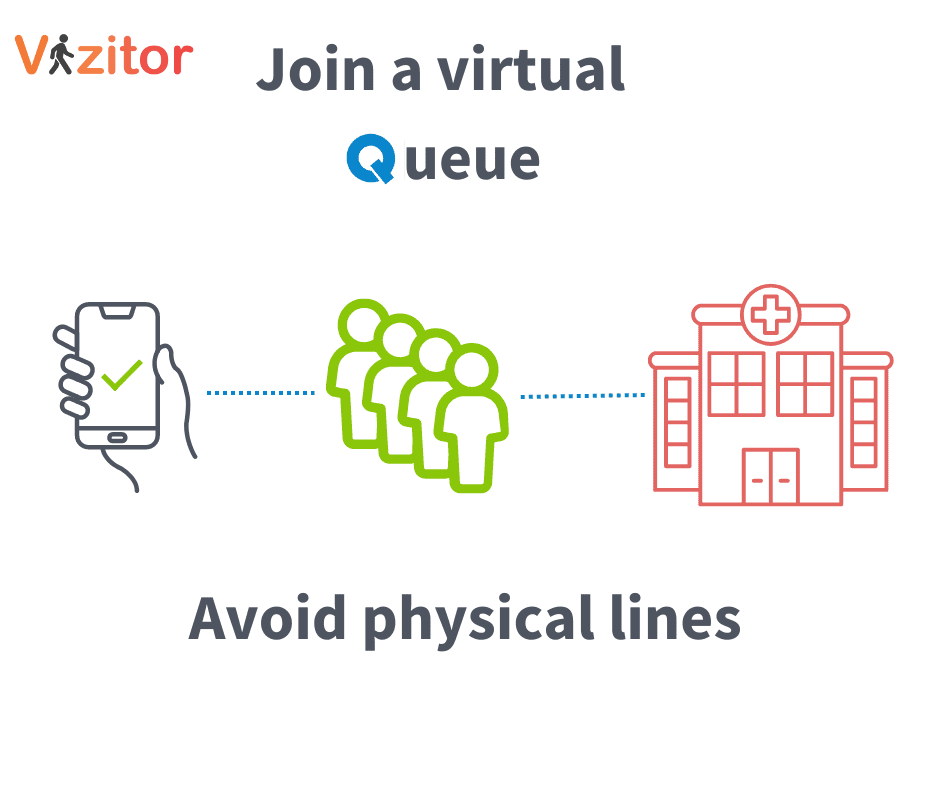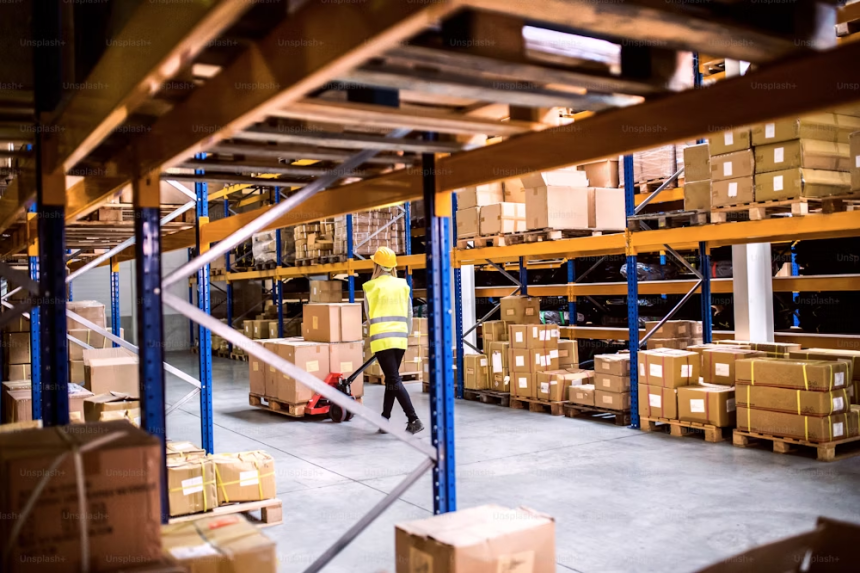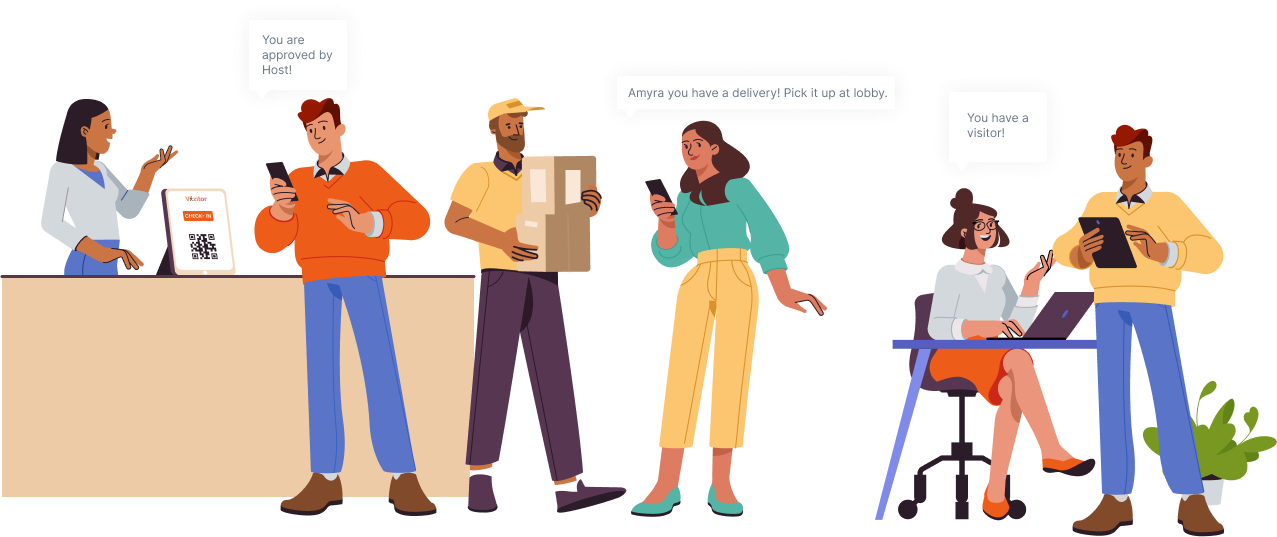Table of Content
Try Vizitor for Free!

Mon, Dec 9, 2024
Read in 6 minutes
Imagine a world where waiting in long, frustrating queues becomes a thing of the past. Standing in long lines can be frustrating for customers and challenging for businesses. Traditional queuing methods are outdated nowadays.
From Offices to banks, all need smart solutions to enhance customer experiences while improving efficiency.
That’s where virtual queuing makes a difference—a smart and easy way to manage queues without the need for physical lines.
With virtual queuing, businesses now offer a smarter, more efficient way for people to wait.
If you’re wondering what virtual queuing is and how it works, you’re in the right place!
This blog post will walk you through everything you need to know about Virtual Queuing Systems and their core benefits.
What is Virtual Queuing?
Virtual queuing is a modern system that allows customers to join a queue digitally instead of waiting in physical lines. Using a virtual queuing system, businesses can organize queues better and let customers know when they should come forward.
Instead of standing in line, customers can now:
• Join a queue remotely using smartphones or digital kiosks
• Track their place in line
• Receive real-time updates
• Wait comfortably wherever they choose
This not only makes the process more convenient for customers but also reduces overcrowding and improves the efficiency of businesses.
How Does Virtual Queuing Work?
Virtual queuing follows a straightforward and intuitive process:
1. Digital Check-In:
Customers can join a queue through various channels, such as scanning a QR code, accessing a mobile app, or using a self-service kiosk placed on-site.
2. Digital Queue Tracking:
Once registered, customers receive a virtual token with their queue position and estimated wait time.
3. Real-Time Notifications:
The system sends updates via SMS, email, or notifications on the app to keep customers informed.They receive instant notifications about their queue status and estimated wait time.
4. Flexible Waiting:
People can move around, shop, or relax while maintaining their place in line.
5. Proceed to Service:
When it’s their turn, they receive an alert to proceed to the service point or counter.
Why Should Businesses Use Virtual Queuing?
Implementing a Virtual Queue Management System like Vizitor offers numerous benefits for businesses.Here are some of the key advantages:
Enhanced Customer Experience
No one likes waiting in long lines. With virtual queuing, customers are freed from physical lines and can manage their time more effectively.
Real-time notifications makes the process feel more transparent and controlled
This reduces frustration and increases customer satisfaction.
Increased Operational Efficiency
By implementing virtual Queues at their workplaces, businesses can streamline their operations. Staff no longer need to manage physical lines, which can be time-consuming and inefficient.
For example,hospitals or clinics could use virtual queue systems to allow patients join queues remotely reducing congestion in the waiting room.
Reduced Crowding and Increased Safety
Virtual Queue Management System reduces crowding in public spaces, which is especially important in busy places and sensitive areas like hospitals, retail stores, and government offices.
By allowing people to wait outside or in less crowded areas, businesses can maintain social distancing and make everyone feel safer.
Enhance Customer Engagement
When customers can track their place in line and receive instant updates, they feel more engaged and valued. Stress-free and convenient queuing experience helps improve customer loyalty.
Cost Savings
By reducing the need for extra staff to manage physical queues, businesses can cut operational costs. The system can handle higher customer volumes without adding extra operational costs during peak hours.
Who Can Benefit from Virtual Queuing?
Virtual queuing systems are versatile and can be implemented across various sectors.Here are some key areas where virtual queuing is used:
1. Healthcare
Hospitals and clinics use virtual queuing to reduce overcrowding in waiting rooms. This is particularly important in maintaining social distancing and ensuring a smoother flow of patients.
2. Retail
In busy retail environments, especially during peak hours, customers can join virtual queues to avoid long waits at checkout or customer service counters.
Large stores like grocery or electronics retailers can implement virtual queuing systems for returns, checkout, or inquiries, ensuring a smooth shopping experience.
3. Government Services
Government offices, such as post offices, often have long queues. Virtual queuing systems can allow citizens to queue digitally, saving time and reducing the need to be physically present in a crowded space.
4. Food and Hospitality
A busy restaurant might use virtual queuing to notify customers when their table is ready, allowing them to wait in a nearby café or shop rather than crowding the entrance.
5. Banks
A customer visiting the bank for a loan consultation or to open an account can join the queue remotely and be alerted when a representative is available to assist them.
Research and Statistics
• Studies show that businesses using virtual queuing systems can improve efficiency by 25% and boost customer retention by 30%.
• A recent survey found that 80% of customers prefer businesses that offer digital queue management solutions.
• Reduced wait times from 90 minutes to 30 minutes
• 85% increase in patient satisfaction
Vizitor’s Queue Management System is a powerful solution designed to streamline customer flow and reduce wait times across various industries including healthcare, retail, and government services.
Vizitor not only improves customer satisfaction but also optimizes staff efficiency and reduces congestion.
By enabling contactless check-ins, issuing digital visitor badges, and tracking real-time visitor data, the system ensures security and efficiency.
Visitors can pre-register or check in via kiosks or mobile apps, reducing wait times and eliminating manual check-in processes.
– Ready to explore Vizitor’s all-in-one Queue Management solutions with a free interactive demo! See how easy it is to manage queues and appointments.
Final Thoughts:
Virtual queuing is the future of queue management, and Vizitor offers interactive features to make queue management simple, efficient, and customer-friendly.
Whether you run a retail store, restaurant, or healthcare facility, our Virtual Queue Management System can transform your operations and keep your customers happy.
Say goodbye to long lines and frustrated customers—explore Vizitor’s queue management solutions today and deliver a seamless, stress-free experience!

FAQs:
1.What is Virtual Queuing?
Virtual queuing allows customers to join a queue digitally and receive updates on their status without physically standing in line.
2. How does Virtual Queuing work?
Customers check in remotely, wait in a designated area, and get notifications when it’s their turn.
3.Which industries can use Virtual Queuing?
Healthcare, retail, government offices, airports, and entertainment venues.
4.Can Virtual Queuing be integrated with other systems?
Yes, it can integrate with appointment scheduling, CRM tools, and visitor management systems.
5.Can Virtual Queuing handle large crowds?
Yes, it efficiently manages high volumes of customers, preventing long waits and overcrowding.









